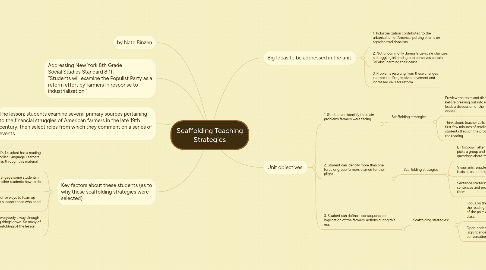
1. by Nate Binzen
2. Addressing New York 8th Grade Social Studies Standard 8.1f: “Students will examine the Populist Party as a reform effort by farmers in response to industrialization.”
3. Big Ideas to be addressed in the unit:
3.1. 1. Industrialization contributed to the urbanization of America, putting strains on agrarian traditionalists.
3.2. 2. Not uncommonly during large-scale changes, a struggling interest group perceives certain “villains” harming their cause.
3.3. 3. Problems resulting from these changes sparked the Progressive movement and increased calls for reform.
4. Unit objectives:
4.1. 1. Student can identify the main problems farmers were facing.
4.1.1. Scaffolding strategies:
4.1.1.1. Preview the texts and discuss key vocabulary: before breaking out into reading groups, teacher leads a discussion of the meaning of several key words
4.1.1.2. Think aloud: teacher calls a brief halt after the first few minutes of reading, and talks the students through the process of thinking about the reading
4.2. 2. Student can identify more than one force or group farmers blamed for their plight.
4.2.1. Scaffolding strategies:
4.2.1.1. L'il fishbowl: after first round of reading, teacher picks a group and has them talk through several questions about the reading together
4.2.1.2. Visual aids: supplement the texts at each table with images.
4.2.1.3. Sentence starters: toss out some incomplete sentences and prompt students to complete them
4.3. 3. Student can define a consequence or implication of the farmers’ actions during this era.
4.3.1. Scaffolding strategies:
4.3.1.1. Focus on the significance: students pair up to explain why the reading helps them identify a consequence. Then some of the pairs are asked to describe their findings to the class.
4.3.1.2. Open-ended questions: pause to ask a couple of 'significance' questions and prompt a brief conversation.
